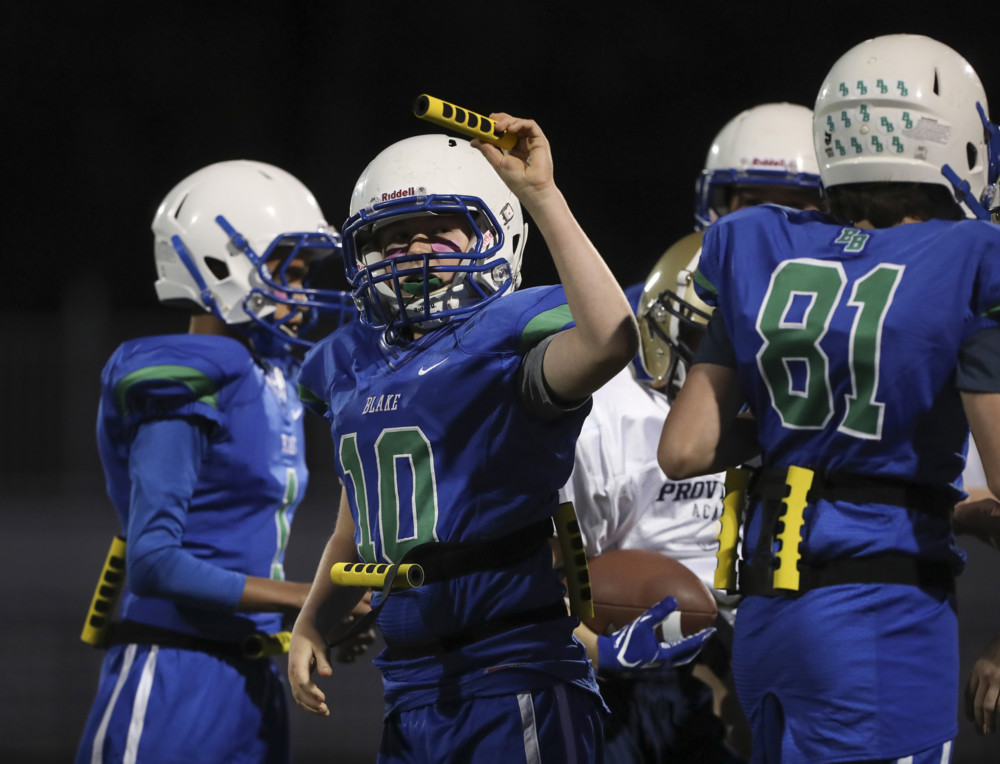By Catherine Roberts
Star Tribune (Minneapolis)
WWR Article Summary (tl;dr) In an effort to come up with a way to improve the safety of their sons who love to play football, Brigid and Jeremy ling created a device to help players avoid heavy hits that can lead to concussions.
Star Tribune (Minneapolis)
Brigid Ling remembers being the only girl at Minnesota Vikings camps growing up.
Yet Ling and her husband, Jeremy, a fellow football lover, faced a difficult moment with their two oldest children as they reached their preteen years and told their parents that flag football was too “baby” for them and they wanted to move up to tackle football.
The St. Paul couple was well aware of concussion studies and wondered whether the sport they loved was safe enough for their children. Several friends were wondering the same thing.
Instead of saying no, they decided to figure out an intermediate step between flag and tackle football for third- through eighth-graders.
Jeremy Ling, a biomedical engineer by trade, started working on a device that would allow the kids to learn fundamentals that would prepare them for high school football.
Birthday parties and play dates turned into prototype sessions.
The result is the company TackleBar, a finalist in the National Football League’s 1st and Future event, a “Shark Tank” style business competition focused on innovative ways to improve safety in the sport.
With TackleBar, players wear helmets and pads. They also wear a harness around their midsection that has two foam bars on the back. The players still make contact like tackle football, but then the defensive player reaches around his or her opponent and grabs one of the foam bars off the harness.
In 2016, the Lings launched two prototype leagues in the Twin Cities. Tim Healy of Long Lake was coaching youths, including one of his seven children, in one of the leagues and saw TackleBar as a natural progression in the game. The Lings recruited him to become CEO of their fledgling venture and launched the company in 2017.
Healy, a former Medtronic distributor who was looking for a new business opportunity, had a free-agent contract with the New Orleans Saints after playing for St. John’s University in Collegeville, Minn.
“Football is such a great game,” he said. “The discipline and hard work, two-a-days, all the weight training, the lessons you learn when you win and lose. I’m speaking for myself. I took a lot of that from the game, so I feel blessed to give.”
That first year, besides adding some Twin Cities leagues, the company also signed a partnership with the Vikings. The team incorporated the device into its youth camps. Then Healy and staff attended conventions to convince coaches that the harness could be the answer to stanching the decline in youth football participation.
Besides concussion concerns, early one-sport specialization and the growth of lacrosse and soccer have hindered the sport. In the 2016-2017 school year, outdoor track surpassed football as the most popular high school participatory sport, according to the National Federation of High School Associations.
Football participation dropped 6.5 percent from 2009 to 2016.
Some youth football leagues are close to extinction and have been looking for something to spark enthusiasm again, Healy said. That was the case with his son’s west-metro program that switched to TackleBar.
The company has contracted with leagues in 21 states and several Minnesota cities, including Cottage Grove, Alexandria, Lakeville, Eden Prairie, Farmington and Roseville.
The company’s timing dovetails with nascent legislative efforts to forbid tackle football for children younger than 12, and in some cases 14, because of concussion risk. Bills were introduced last year in California, Illinois, Maryland, and New York.
“The concern for safety is real. The injuries from concussions are real,” Healy said. “It’s a violent sport and at younger ages, a number of studies recommend to put off contact until 12 or 13. … There’s part of me that thought this would not be received as well by the hard-core football guys. But they see it, that they need to make a change.”
TackleBar recently worked with the University of Minnesota to analyze injury data from the leagues that use the harnesses. Players averaged less than one injury per 1,000 practices and games. No concussions have been reported.
For this reason, Healy sees a market in the future at colleges like his. When he was at St. John’s, the late coach John Gagliardi conducted no-tackle practices. But Healy especially sees an opening at high schools, which have made a concerted effort in recent years to lower injury rates.
TackleBar also would like to start an offseason league similar to those in volleyball or basketball, and Healy said he could see college and adult flag football leagues converting to TackleBar as well.
The winner of the Super Bowl business contest in TackleBar’s category wins $50,000. The company that places second wins $20,000.
Even though that’s not big money in the business world, it could be a game-changer for TackleBar. The company plans to hit 40 big coaches’ conferences. The money would allow them to greatly expand their travel plans. It also would allow the company to develop coaches’ resources and guides that would make it easier to expand leagues.














































































































































































































































































































































































